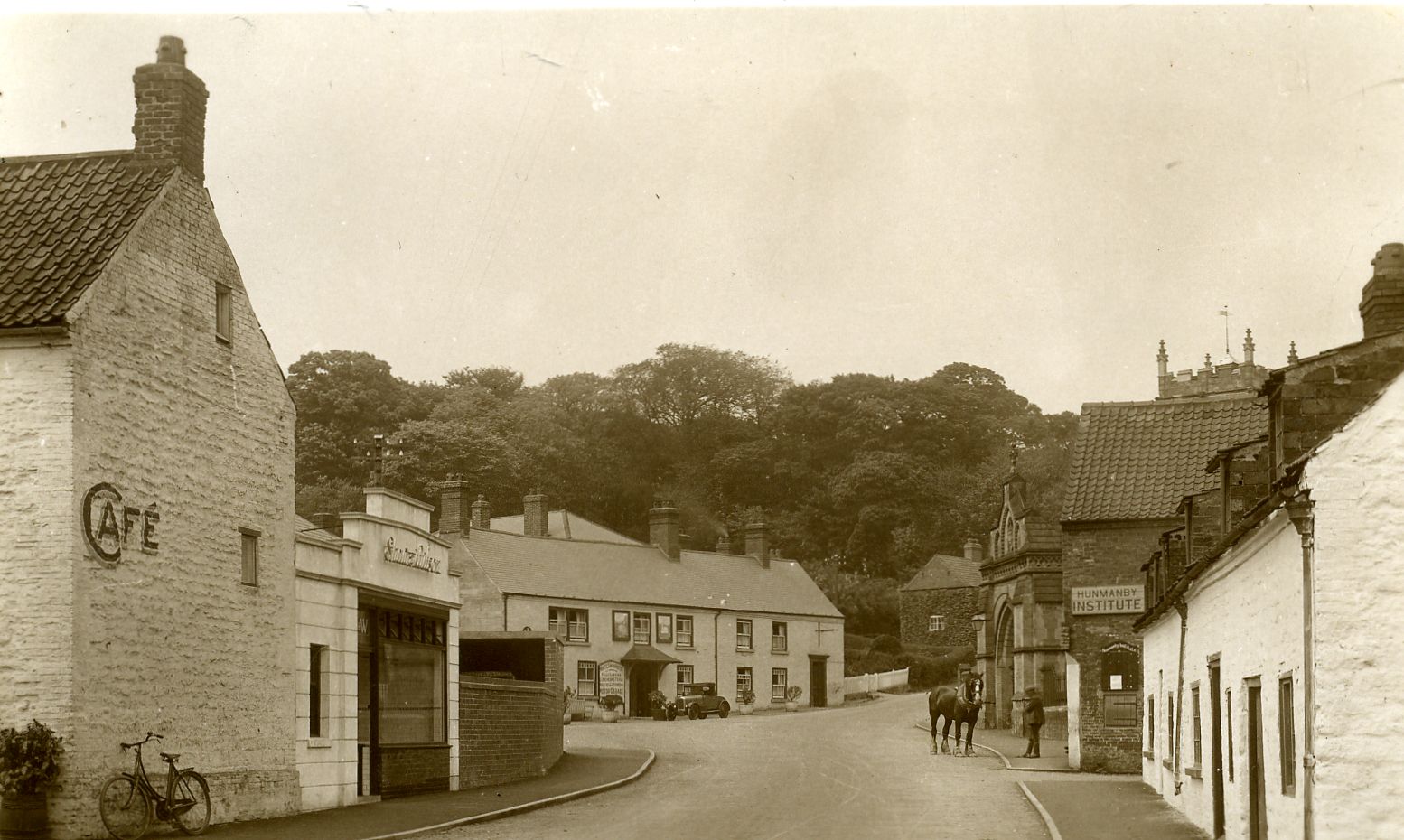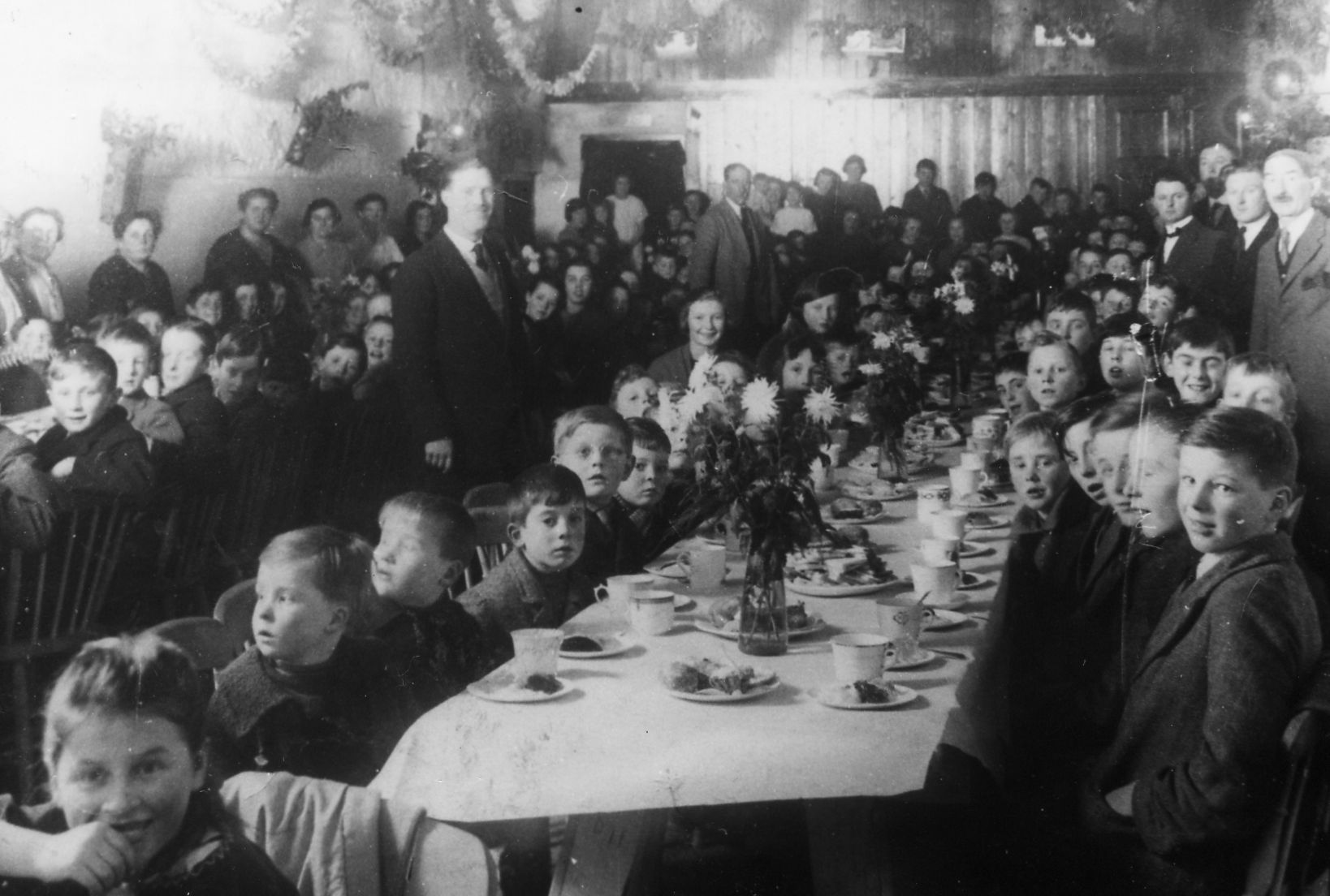By
Ces.Mowthorpe. (Copyright 2007.)

Notice ‘Notice Board’ on corner of Hunmanby Institute – previously Brewery and Creamery. Photo taken 1936.
It is important that this article follows on next to Hunmanby Brewery because they were effectively the same building. The Creamery folded up in the early 1920s and the building was vacant. Under encouragement from the Hunmanby Parish Council a separate committee was formed and finance found to purchase this property. Many modifications were involved. First floor was strengthened. Ground floor was cleared to make a large open area for dances, concerts, etc. A small room was available for committees, Council’s etc. A staircase was boarded off nears the bottom entrance which provided the main access.
What was the purpose of this Institute ? It provided facilities for the village which the Hunmanby Community Centre does today (2007). The first floor had three full-size billiard tables – one kept specially for competition games, one for ordinary players and the oldest, was the domain of the younger, inexperienced players. A coke stove kept an even temperature and a responsible villager was in charge, for which he received a small fee. This billiards room also served a useful purpose for older and infirm village men.
On a cold day when the weather prevented them walking and congregating outside they could huddle around the stove in chairs usually get a cup of tea from the ‘caretaker’ and gossip away to their heart’s content.
The large room downstairs was available to all, for a fee. Many families hired it for wedding receptions (providing food and drink from their own homes, All members assisted and pride was taken in providing a ‘good spread’.
Dances were another source of income. Annual Cricket Club Dances and Football Club events were popular pre-WW.2 but during WW.2 every Saturday night a popular dance was held to build funds for our returning village lads ‘after the war’. This jurisdiction was held by a separate committee which Mr Mallinson, village baker, was chairman (and door-keeper). Admission 1/- in old money. The troops billeted locally were welcomed and girls came from Filey, Muston , North Burton and Reighton etc. Many (then) young folk, included myself got their first dancing experience at Hunmanby Institute on a Saturday evening. The last waltz, then ‘The King’ was played promptly at 11.45pm in order to observe the Sabbath.
Between the wars the local dance band was popular, usually consisting of Bennett Hudson, Billie Hogg and Mrs Mowthorpe (my mother) or Mrs Hayward on the piano.
Concert parties also built a substantial stage and lighting. The earliest were Bennett Hudson’s Concert Parties, the Annie Coates’ Pantomines. It is hoped soon to include separate articles about these two excellent village institutions.
Outside, on the North-West corner was a little shop. Occupied for many years by Mr Sidney Owston’s wife Florrie it latterly occupied by Mr TomClarke – a village Joiner and Builder. It was during his occupancy that a serious fire took place in 1953 which rendered the the whole building ‘unsafe’. After several years it was finally demolished and the Bayley Gardens replaced same.

This is a rare picture of the interior the big room. Taken in the early 1920’s it appears to be some sort of children’s ‘party’. Man standing left centre is Mr Mann The smiling young lady is Doris Garbut. Man in bow tie at right is Edwin Story and next but one his father.
Young boy extreme bottom right is George Milner. Picture taken c.1924.